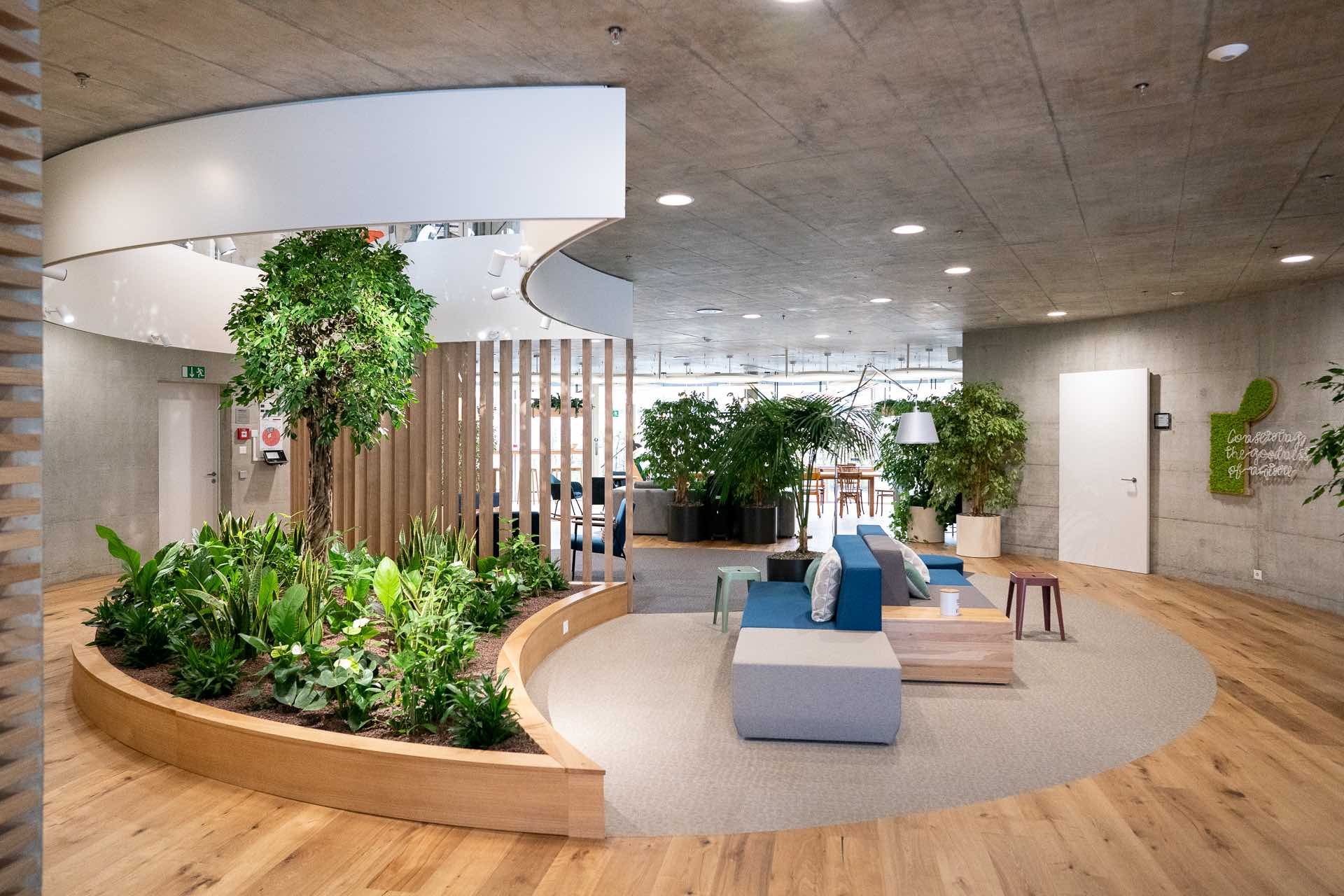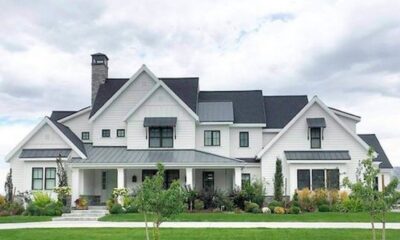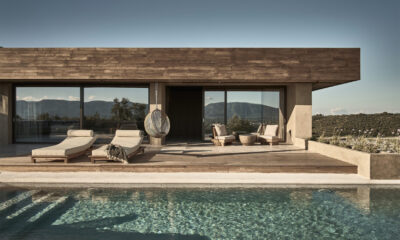Design
Exploring how biophilic design boosts mental wellness

How biophilic design boosts mental wellness sets the stage for this enthralling narrative, offering readers a glimpse into a story that is rich in detail and brimming with originality from the outset.
As we delve deeper into the impact of biophilic design on mental wellbeing, we uncover fascinating insights that shed light on the profound connection between nature-inspired spaces and our psychological health.
Introduction to Biophilic Design
Biophilic design is an innovative approach that incorporates natural elements into man-made spaces to create environments that benefit our mental and physical well-being.
Principles of Biophilic Design
- Biomorphic Forms: Incorporating shapes and patterns found in nature, such as curves and fractals, into design elements.
- Natural Light: Maximizing the use of natural light to mimic outdoor conditions and improve mood and productivity.
- Visual Connection with Nature: Providing views of nature, such as greenery or water, to reduce stress and enhance cognitive function.
- Natural Materials: Using materials like wood, stone, and plants to bring the outdoors inside and create a sense of comfort and tranquility.
- Biodiversity: Incorporating a variety of plant and animal life to promote a sense of connection to the natural world.
Examples of Biophilic Design Elements
- Green Walls: Vertical gardens that cover walls with living plants, improving air quality and reducing stress.
- Atriums: Open spaces with skylights and plantings that provide a connection to nature and natural light.
- Biophilic Furniture: Pieces made from natural materials like bamboo or cork that bring a touch of nature into indoor spaces.
- Water Features: Fountains or ponds that create a calming atmosphere and promote relaxation.
- Natural Color Palettes: Using earth tones like greens, blues, and browns to evoke the feeling of being outdoors.
Impact of Biophilic Design on Mental Wellness

Biophilic design has a profound impact on mental wellbeing by fostering a strong connection to nature through architectural elements and natural surroundings. This design approach has been shown to have significant psychological benefits, promoting feelings of calmness, relaxation, and overall happiness.
Reduced Stress and Anxiety
- Biophilic design elements such as natural light, indoor plants, and views of nature have been proven to reduce stress levels and promote a sense of tranquility.
- Exposure to nature in indoor spaces can lower blood pressure, heart rate, and cortisol levels, leading to decreased feelings of anxiety.
- The presence of biophilic elements helps create a soothing environment that encourages mental rejuvenation and emotional well-being.
Incorporating Biophilic Design Elements
When it comes to incorporating biophilic design elements into interior spaces, there are several key elements that can significantly enhance the connection to nature and boost mental wellness. These elements include natural light, plants, water features, and the use of natural materials.
Natural Light
- Maximize natural light by strategically placing windows and skylights to allow sunlight to flood the space.
- Use light-colored curtains or blinds to allow for ample sunlight while maintaining privacy.
- Consider installing light tubes or solar tubes to bring natural light into interior rooms with limited access to windows.
Plants
- Introduce a variety of indoor plants such as succulents, ferns, and peace lilies to improve air quality and create a calming environment.
- Utilize plant walls or vertical gardens to incorporate greenery without taking up floor space.
- Place plants strategically near workstations or common areas to promote relaxation and reduce stress.
Water Features
- Incorporate water features such as indoor fountains, aquariums, or even small tabletop water features to introduce the calming effect of water into the space.
- Consider adding a small indoor pond or water wall to create a focal point and enhance the sense of tranquility.
- Ensure proper maintenance to prevent water features from becoming a source of stress due to upkeep.
Natural Materials
- Opt for natural materials like wood, stone, bamboo, and clay in furniture, flooring, and decor to bring the essence of the outdoors inside.
- Select furniture with organic shapes and textures to mimic elements found in nature.
- Avoid synthetic materials and opt for sustainable options to further enhance the biophilic design concept.
Case Studies and Examples

Biophilic design has been implemented in various spaces to enhance the well-being of occupants. Let's explore some real-life examples where biophilic elements have made a significant impact on mental wellness.
Google Headquarters, California
The Google Headquarters in California is a prime example of biophilic design done right. With abundant natural light, indoor greenery, and outdoor spaces integrated throughout the office, employees have reported feeling more energized, focused, and creative. The incorporation of biophilic elements has transformed the work environment into a more vibrant and engaging space, leading to improved mental well-being.
Singapore Changi Airport, Jewel
Singapore's Changi Airport, specifically the Jewel complex, showcases the successful implementation of biophilic design on a large scale. The indoor waterfall surrounded by lush greenery creates a tranquil and rejuvenating atmosphere for travelers. Studies have shown that exposure to nature within the airport environment has reduced stress levels and increased overall satisfaction among passengers.
The incorporation of biophilic elements has not only enhanced the aesthetic appeal but has also positively impacted the mental wellness of visitors.
Sage Glass Headquarters, Minnesota
The Sage Glass Headquarters in Minnesota has embraced biophilic design principles to create a healthier and more productive workspace. By introducing elements such as living walls, natural materials, and views of the surrounding landscape, employees have experienced a noticeable improvement in mood and well-being.
The before-and-after comparison of the workspace highlights the positive changes brought about by biophilic design, emphasizing the importance of nature-inspired elements in indoor environments.
Final Summary

In conclusion, the transformative power of biophilic design in enhancing mental wellness cannot be overstated. By embracing nature within our built environment, we pave the way for a harmonious coexistence between humanity and the natural world, fostering a sense of tranquility and rejuvenation that is truly unparalleled.
Query Resolution
How does biophilic design impact mental wellness?
Biophilic design has been shown to improve mental wellness by reducing stress, increasing productivity, and fostering a sense of calm and connection with nature.
What are some key elements of biophilic design?
Key elements include natural light, plants, water features, and the use of natural materials like wood and stone to create a harmonious and nature-inspired environment.
How can biophilic design be incorporated into residential spaces?
Residential spaces can integrate biophilic design by adding indoor plants, maximizing natural light exposure, and using earthy tones and textures to evoke a sense of nature indoors.
Are there any specific benefits of biophilic design for mental health?
Yes, biophilic design has been linked to improved mood, reduced anxiety, and increased cognitive function, all of which contribute to better mental well-being.

-

 General3 weeks ago
General3 weeks agoSmart Lifestyle Design Tips for Small Urban Homes: Transforming Limited Spaces into Functional Living Areas
-

 General3 weeks ago
General3 weeks agoModern Farmhouse Exterior Ideas for Luxury Lifestyle Homes: A Guide to Elevated Living
-

 General3 weeks ago
General3 weeks agoCaptivating Title: Interior and Exterior Design Ideas for Wellness Retreats
-

 General3 weeks ago
General3 weeks agoLuxury Outdoor Living Spaces for Healthy Lifestyles: Elevate Your Outdoor Experience
-

 General3 weeks ago
General3 weeks agoAI-powered lifestyle design tools for home planning: Revolutionizing Efficiency and Customization
-

 Business Tools3 weeks ago
Business Tools3 weeks agoThe Best CRM Systems for Lifestyle Coaches and Consultants
-

 Architecture3 weeks ago
Architecture3 weeks agoExploring the Top Lifestyle Design Trends in Modern Architecture
-

 General3 weeks ago
General3 weeks agoTransforming Lifestyle with Modular Home Designs: Revolutionizing Living Spaces


